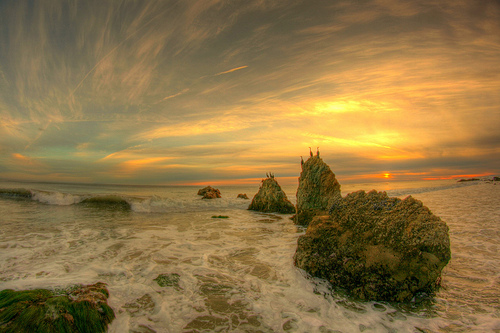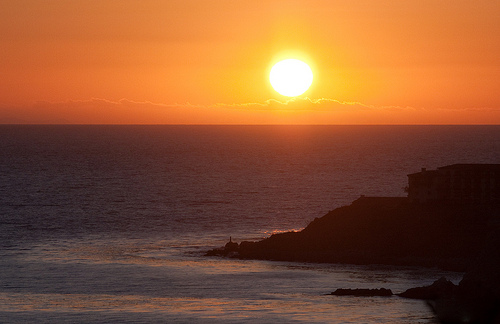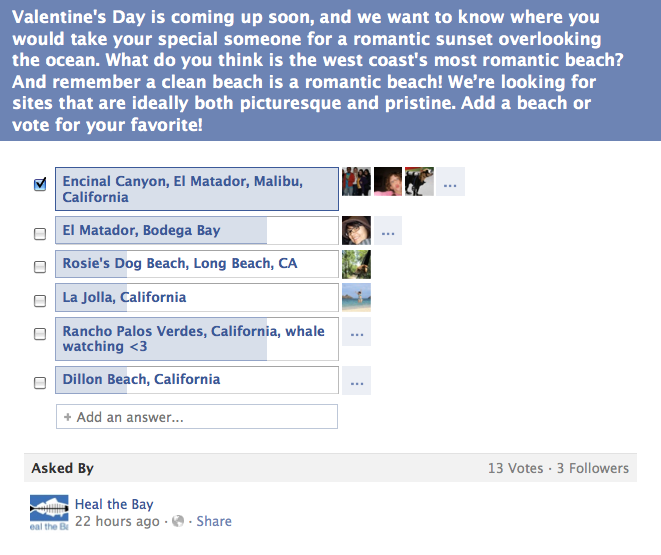SANTA MONICA, Calif. (Jan.10, 2012) – Heal the Bay president Mark Gold announced today that he is stepping down from the environmental organization to accept a position at the University of California at Los Angeles as associate director of its Institute of the Environment and Sustainability.
Gold, a 23-year veteran of Heal the Bay, is returning to his alma mater to provide leadership at the Institute’s Coastal Center. As part of his management duties, he will also help spearhead efforts to build the Institute’s education, research and public outreach programs. He begins his new duties at UCLA Jan. 30.
Executive Director Karin Hall and Associate Director Alix Hobbs will continue to provide day-to-day management and organizational and fiscal oversight for the environmental group. Heal the Bay’s board of directors will be meeting to determine a management structure for the nonprofit following Gold’s departure. Gold will continue to serve on Heal the Bay’s board of directors.
“Everyone who lives in or visits Southern California has benefited from Mark Gold’s tireless efforts to keep our waters safe and clean,” said Matt Hart, chairman of Heal the Bay’s board of directors. “He has also built a great organization of smart, dedicated professionals that will sustain the legacy he and Dorothy Green started over 25 years ago.
“On behalf of our Board of Directors, our Board of Governors and the thousands of Heal the Bay volunteers, I want to thank Mark Gold for his leadership and service to Heal the Bay and wish him the best of luck in his new career at UCLA.”
While working on his doctorate in Environmental Science and Engineering from UCLA, Gold joined Heal the Bay as staff scientist in 1988, making him the organization’s first employee. Guided by his mentor and Heal the Bay founding president Dorothy Green, Gold was named executive director of the organization in 1994 and president in 2006.
He has worked extensively over the last 25 years in the field of coastal protection and water pollution and is recognized as one of California’s leading environmental advocates. He has authored or co-authored numerous California coastal protection, water quality and environmental education bills.
“I have been lucky to be part of an environmental organization that has achieved so much to better Southern California,” said Gold. “I’ve had the privilege to work with many incredible leaders, staff members and volunteers that have shared a common vision of clean water and protected watersheds. I am confident that the senior management team we’ve spent years developing will continue to move the organization forward. Heal the Bay will always be an important part of me, but I look forward to new challenges at UCLA’s Institute of the Environment.”
Heal the Bay staff is focusing on four key policy issues in the coming year:
- The implementation of marine protected areas off the coast of Southern California. Heal the Bay is assisting the state Department of Fish & Game gather research to help educate the public about the boundaries, which took effect Jan. 1.
- Coordinating with Assemblymember Julia Brownley on her pending bill to enact a statewide ban on the distribution of environmentally and fiscally wasteful single-use plastic bags. Heal the Bay also has led the drive for a ban in the city of Los Angeles expected to be enacted this spring.
- Working with local school districts to implement environmental literacy materials developed by National Geographic and Heal the Bay into K-12 curriculum statewide.
- Advocating for a countywide stormwater permit that will reduce polluted runoff to levels that protect public health and aquatic life
Heal the Bay is one of the largest and most influential environmental groups in California. Combining scientific rigor with dogged advocacy, Heal the Bay staff and volunteers have secured dozens of environmental wins for Southern California coastal waters, including:
- Hyperion wastewater treatment plant – In 1986, Hyperion was ordered to stop dumping incompletely treated sewage in the bay by 1998. Also, the LA County Sanitation District’s sewage treatment plant in Carson was forced to upgrade its facility by 2002. As a result, sewage pollution discharged to Santa Monica Bay was reduced by more than 90%.
- Pollution limits – Heal the Bay fought to have site-specific pollution limits included in routine regulation. These so-called Total Maximum Daily Loads (TMDLs) force dischargers to dramatically cut down on trash, bacteria and other pollutants entering our rivers, creeks and ocean.
- Beach Report Card – In 1990, Heal the Bay published the first Beach Report Card, a local analysis of bacteria levels at L.A. area beaches as a guide to let swimmers know if it was OK to get in the water. Heal the Bay now grades almost 500 beaches along the Pacific coast on a weekly basis. The Beach Report Card, the subsequent Santa Monica Bay health effects study, and beach TMDLs led to California’s beach water quality criteria and monitoring program, as well as over $200 million being allocated to clean up California’s most polluted beaches.
- Santa Monica Pier Aquarium – In 2003, Heal the Bay opened the Santa Monica Pier Aquarium, bringing the Santa Monica Bay to life for more than 70,000 people each year.
- Coastal Cleanup Day – Heal the Bay first coordinated Coastal Cleanup Day in Los Angeles County in 1990. Now, 15,000 people annually clean more than 65 sites, both coastal and inland in L.A County.
More about Mark Gold
Gold received his bachelor’s and master’s degrees in Biology and his doctorate in Environmental Science and Engineering from UCLA. He has served as chair of the Santa Monica Environmental Task Force for 18 years and was vice chair of the California Ocean Science Trust. Currently, Mark is vice chair of the National Estuary Program’s Santa Monica Bay Restoration Commission.
About Heal the Bay
Heal the Bay is a nonprofit environmental organization that makes Southern California coastal waters and watersheds, including Santa Monica Bay, safe, healthy and clean. We use science, education, community action and advocacy to achieve our mission.
Contact: Matthew King, Heal the Bay, 310.451.1500, x 137; cell 310.463.6266



 VS.
VS. 
